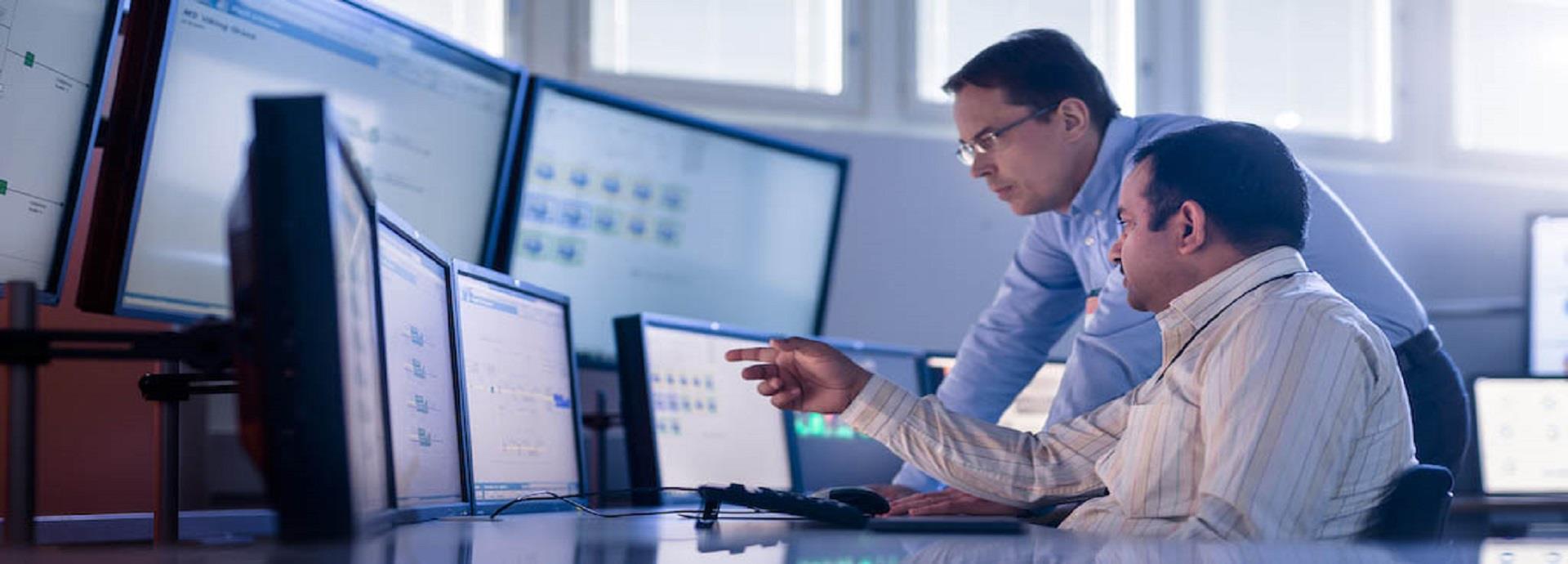

Improving fuel efficiency and reducing emissions are the backbones of the cooperation between Royal Caribbean and Wärtsilä today, covering 20 vessels. The partnership started with a giant leap 15 years ago, when Royal Caribbean International and Wärtsilä teamed up to pioneer Condition Based Maintenance (CBM) for Adventure of the Seas, making it the world's first ship to have its engines monitored from shore.
“The benefits of a long partnership are clear, when it comes to CBM. Monitoring the same vessels and engines for several years is a continuous learning experience and creates a deep familiarity with the installation,” says Kari Koivunen, Senior Technical Superintendent, CBM, Wärtsilä Services.
“But the co-operation does not stop at maintaining the status quo. Together with Royal Caribbean, we engage in mini-projects to, for instance, improve fuel efficiency or reduce emissions and develop Royal Caribbean’s operations to an even better level.
Kimmo Heikkilä, Director of Power plant and Technical Systems at Royal Caribbean adds that there are field tests ongoing all the time related to, for example, safety-related items or efficiency-improvement technology. Twice a year, current projects are discussed, as well as what's coming up five or 10 years in the future.
According to Jens Vägar, Manager for Condition Based Maintenance at Wärtsilä Services, developments in the works for the CBM enhancement project focus on advanced analytics using machine learning, cyber secure solutions, and moving to a cloud-based system for data storage and processing – a migration that's already started. In the near future, the remote CBM diagnostics will be further enhanced with daily anomaly detection algorithms, which will enable even faster reaction when performance deteriorates and potential failures are predicted.

The collaboration between Wärtsilä and Royal Caribbean started 15 years ago.
Paving way for digitalisation – where it all started
CBM for ship engines was a radical notion when Royal Caribbean and Wärtsilä began exploring the idea a decade and a half ago. 'Digitalisation' and 'Internet of Things' weren't common terms then, and the concept of bolstering maintenance and operation through remote, real-time equipment monitoring was still in its infancy. But Royal Caribbean was in need of a bold solution.
“We were expanding our fleet quite a lot,” recalls Heikkilä. “We needed a system where we could get feedback from the engines, having the OEM advise us on any issues that might be developing so we could react at an early stage, before they became critical.”
Wärtsilä, which was already a major engine supplier for Royal Caribbean, had implemented its first remote monitoring system on a land-based power plant the year before. Creating a similar system for use at sea, however, was another matter.
“Collecting data from these moving ships and transferring this data on a daily basis onshore was quite a pioneering thing within the marine industry,” says Vägar.
The solution the companies developed for Adventure of the Seas entailed attaching a data acquisition application to the ship's existing automation platform – the complex system that monitors and controls all equipment on board. The application picks out the signals relevant to engine performance and, after some packaging, sends them via satellite uplink to Wärtsilä for analysis, automatically, every day.
Reaping the benefits
The real payoffs come after Wärtsilä processes the data and communicates its findings to Royal Caribbean. At this point, anomalies spotted in engine readings are used to guide predictive maintenance efforts.
Rapid advances in sensor technology and satellite connectivity have boosted the volume of data that the system can collect, allowing it to monitor about 250 engine parameters compared to the 50 to 100 covered in 2002. This, inevitably, improves safety and availability on board.
Vägar points out that maintenance represents only part of the benefit of CBM diagnostics. “It's also very much about optimising the operation of the engines to lower fuel consumption. By ensuring that parameters such as exhaust gas temperature, turbo charger speed, and pressures are kept at the correct levels, fuel consumption – and hence emissions – can be minimised.”
Desire for the extra edge
Eniram, a Wärtsilä company since 2016, has been collaborating with Royal Caribbean, since 2008, in order to further improve the performance of the fleet. Operational efficiency and transparency of operations have been the core objective of the partnership. It started with optimised trimming system pilot and optimised speed service. Operations have become more and more sophisticated and smarter. As the collective learning increased, operational efficiency has been optimised from various technological angles.
“Machines need to be taught to learn and that requires data and history. People need to be brought together with machines. In order to take it to the next level, we will aggregate the data silos and expand the spectrum of analysis. We have done amazing work optimising a set of dimensions. We will now combine these at an enterprise level to discover more insights. Collaboration between Eniram and Services CBM development has been close, in which advanced analytics have been jointly validated and tested. Bringing the domain expertise together gives us an unprecedented opportunity to enable a new level of understanding,” says Eric Schreiber, Key Account Director of Eniram.
“We have the momentum now as technological development – sensors, computer crunching power, connectivity – has made it possible and sensible to put artificial intelligence into a domain it has never been before. With the long partnership with Royal Caribbean we have the opportunity to add value. I believe we are going to disrupt the status quo again. Royal’s spirit of innovation and the desire for the extra edge moves the whole industry forward, which makes the dynamic of this partnership unique.”
Without a doubt, the feedback that Wärtsilä receives under its partnership with Royal Caribbean will help it perfect upcoming innovations, just as has been happening since 2002. The rewards of the next 15 years of collaboration could be even more amazing than anything seen so far.

